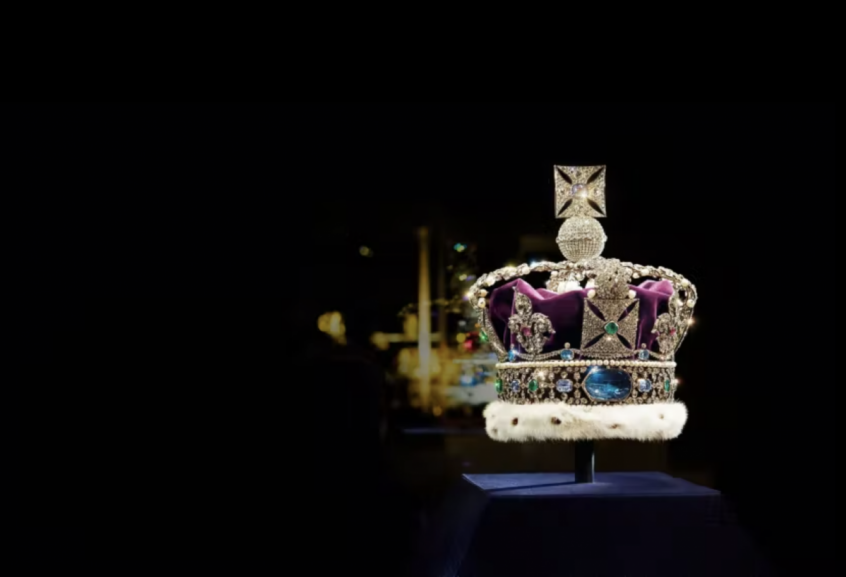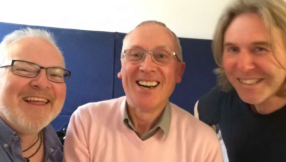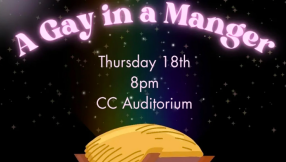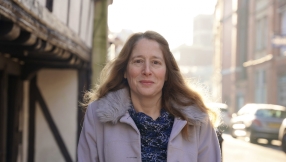
The death of Her Majesty Queen Elizabeth II and the accession of King Charles III has reminded us of the deep traditions and ceremonies which are the hallmark of this important time in the constitutional life of the nation. Many of these traditions draw from Christian faith, and from the history of the Church in these islands.
Already we have heard echoes of history in the Church of Scotland's particular place in the Accession Oath sworn by King Charles; and his role as Supreme Governor of the Church of England is seen in the oath he swears before parliament.
However, the connections go deeper than these legal aspects, as important as they are. This is because Christianity is hard-wired into the history and practice of the British monarchy.
This became ever more apparent during the funeral of Her Majesty and will continue to do so as the attention of the nation now turns towards the coronation of King Charles.
As we reflect on this – and then, in time, return to it when the coronation occurs – the way that Christian faith is woven into what it means to be the monarch will become even more apparent.
Raising crowns and laying them down
When Queen Elizabeth was crowned, in June 1953, and when, in due course, King Charles is crowned, the ideas incorporated in these rites (and in the idea of monarchy itself) stretch back into Anglo-Saxon England.
Today, the spiritual centre of the monarchy is in Westminster Abbey, a church whose origins date from the 960s or early 970s, when Saint Dunstan and King Edgar installed a community of Benedictine monks there.
Between 1042 and 1052, King Edward the Confessor began rebuilding St Peter's Abbey in order to establish a royal burial church. The building was completed around 1060 and was consecrated only a week before Edward's death in January 1066.
Since then, it has been closely connected with the English monarchy and then British monarchy, as a place of coronation and funeral (even if, since the 19<sup>th century, the preferred burial place has been at Windsor).
It should be noted though, that Anglo-Saxon kings used various locations for their coronations, including Kingston upon Thames, Bath, London, and Winchester. The last Anglo-Saxon monarch, Harold II, was crowned at Westminster Abbey in 1066, and died later that same year at the Battle of Hastings.
After the Norman Conquest coronations sometimes occurred elsewhere. In 1216, at a time when London was under the control of rebels, Henry III was crowned at Gloucester. He clearly felt something of the mystique of kingship had been reduced in this and he later chose to have a second coronation at Westminster in 1220.
Two centuries later, Henry VI also had two coronations. One was as king of England in London, in 1429, and the second was as king of France in Paris, in 1431. That latter venture came to nothing because England eventually lost the Hundred Years War.
The key thing is that Westminster Abbey stands as a sacred space where the crown is raised, and finally laid down.
The timing of coronations
The coronation of the new sovereign follows some months after his or her accession. King Edgar's coronation in 973, at Bath, was 15 years after his accession in 957. It emphasised a sacred view of kingship since it occurred when he reached the age of 30, the age at which Jesus was baptised. Edgar died just two years later, in 975.
On the other hand, Harold II was crowned on the day after the death of his predecessor, Edward the Confessor. His replacement, William I, was crowned on Christmas Day 1066, just three weeks after the surrender of the English nobles and bishops to him.
Under the Hanoverians, the period between accession and coronation was extended to several months. Since George IV (in 1820), at least one year has passed between the accession and the coronation. The exception was the late Queen's father, George VI, whose predecessor had abdicated. As the coronation date had already been set, the process continued but with a new monarch.
The late Queen's coronation took place on 2 June 1953. Her accession had occurred on 6 February 1952. The role she inherited drew on a deep Christian heritage. It has defined her reign. It defines British monarchy.
Sacred words drawn from scripture and the history of Western Christendom
The roots of the coronation service, and the earliest form of the oath sworn during it, date from Edgar's coronation in 973. It drew on continental ceremonies used by the kings of the Franks across the English Channel, and also referenced words used in the ordination of bishops.
As with so much that is, apparently, quintessentially English/British in the monarchy, it is actually indebted to a pan-European tradition since it drew on the traditions of Western Christendom. It did not originate in isolation. It was part of the Christian European mainstream.
Today, two versions of Anglo-Saxon coronation services survive. They are known as ordines (from Latin 'ordo,' 'order') or recensions. The second of these recensions seems to have been the one used by Edgar and then by later Anglo-Saxon and early Norman kings.
During the reign of Henry I, a third order of service was devised and this one was used at the coronation of his successor, Stephen, in 1135. This coronation order borrowed large parts from that used in the Holy Roman Empire in central Europe and originally compiled in Mainz in 961. Once more it brought English royal behaviour into line with continental practices.
This continued to be used until the coronation of Edward II in 1308. It was then that a new recension was produced, that was influenced by the French coronation order. However, the English version differed because it reflected the English monarchy's reliance on the assent of the nobles and, arguably, the implicit support of parliament. A manuscript of it survives at Westminster Abbey, called the Liber Regalis.
The first Protestant coronation occurred in 1547 - that of Edward VI. The style and content reflected the shift in ideology. Six years later, in 1553, Mary I reverted to the Catholic rite. This was also used at the crowning of Elizabeth I, in 1559, although the religious tide was now flowing the other way.
England and Scotland were united under one monarch in 1603 but since 1685, monarchs have only had a Westminster coronation.
The coronation service was first translated into English in 1603. However, the Latin version appeared again for the 1714 coronation of the German-speaking George I. Since then, it has been in English.
In 1685 there was no Holy Communion at the coronation, but this has been restored since then.
In the 20<sup>th century the form of the service has been revised somewhat. These changes have increased the emphasis on the spiritual nature of the service and look back to its medieval roots as an anointing by God.
Sacred monarchy as seen in the coronation of Queen Elizabeth II
A sacred understanding of monarchy was vividly demonstrated in the coronation of Queen Elizabeth II and it helped define her reign and her understanding of the function of monarchy under God.
She entered the abbey to the singing of Psalm 122, "I was glad when they said unto me, We will go into the house of the Lord." Among the various oaths of government, she swore to "maintain the Laws of God and the true profession of the Gospel" and "maintain in the United Kingdom the Protestant Reformed Religion," and "preserve inviolably the settlement of the Church of England, and the doctrine, worship, discipline, and government thereof."
These are central to the role of the monarch as head of the Church of England (although, it should be noted, not of Scotland). These were sworn on the Bible, which the Queen kissed.
At this point she was given a Bible, "to keep your Majesty ever mindful of the law and the Gospel of God as the Rule for the whole life and government of Christian Princes." She was reminded: "Here is Wisdom; This is the royal Law; These are the lively Oracles of God."
After Bible readings and the recitation of the creed, she was anointed with oil. Here she experienced a tradition that stretches back to the Old Testament and finds its most exalted expression in the Hebrew word mashiach (anointed one) which translated into Greek as Christos - from this we get the title 'Christ'.
It emphasises that the monarch is anointed by God and should pattern their life and rule on Christ. It is an extraordinarily powerful action.
Prior to this, the choir sang:
"Zadok the priest and Nathan the prophet anointed Solomon king;
and all the people rejoiced and said:
God save the king,
Long live the king,
May the king live for ever. Amen. Hallelujah."
It is noteworthy that, at this point, the Queen was assisted in removing her crimson robe by the Lord Great Chamberlain, assisted by the Mistress of the Robes. It was then that she went before the altar to receive the anointing, in a state of humility.
After this she received the Spurs and Sword, the Sceptre with the Cross and the Rod with the Dove, and other royal regalia. Then she was crowned and the assembled congregation repeatedly shouted (and "shout" is in the rubric for the service!): "GOD SAVE THE QUEEN."
But she was anointed first and that is the key point. Anointing came before these other symbolic acts and the Benediction, Enthroning and Homage which followed. Then communion was taken. The point is that the anointing by God defined all that came after. The power of earthly authority is sanctioned by God; it is anointed-power.
On Monday 19 September, the crown of Queen Elizabeth II was, in a sense, laid down before God in the funeral service at that traditional site in Westminster Abbey. This occurred in the same place where it was raised and placed on her head in 1953.
Since that day, 70 years ago, we have seen how that ceremony defined her life and rule. This was rooted in a history of monarchy that stretches back over a millennium and finds its origins in scripture and in the ancient history of Israel.
In time, as the period of mourning ends, and we look towards a new coronation, we will see how that history and understanding is expressed and developed in the crowning and the reign of King Charles III.
Martyn Whittock is an evangelical historian and a Licensed Lay Minister in the Church of England. As the author, or co-author, of fifty-four books, his work covers a wide range of historical and theological themes. He also has an interest in, and has written about, Anglo-Saxon and medieval history, and the deep roots of modern UK politics and culture. In addition, as a commentator and columnist, he has written for several print and online news platforms; has been interviewed on radio news exploring the interaction of faith and politics; appeared on Sky News discussing political events in the USA; and recently has been interviewed regarding the war in Ukraine, including its religious dimensions. He is a regular member of the 'Faith Panel' on TalkTV. His most recent books include: The Secret History of Soviet Russia's Police State (2020), Daughters of Eve (2021), Jesus the Unauthorized Biography (2021), The End Times, Again? (2021) and The Story of the Cross (2021). He has just completed Apocalyptic Politics (2022 forthcoming), which examines apocalyptic beliefs driving political radicalization across global cultures.













